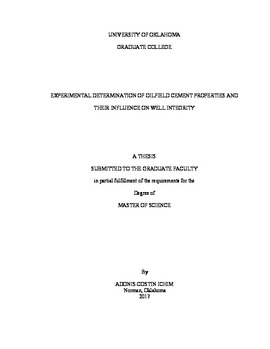| dc.description.abstract | Oilfield cements are a key element in well construction, during the operational phase of a well, and after its abandonment. Hydrocarbon, geothermal, gas storage and carbon sequestration wells make use of oilfield cements to seal the annular space between the casing and the formation, some of the most common cements being API Class G and H. With an increase in the world’s energy needs and an expected uptick in drilling and plugging and abandonment activities, evaluating and understanding cement properties is crucial, since these properties are used in various engineering designs and calculations. In many scenarios, these properties are assumed constant with time, but an increasing number of authors have shown how properties change with time, temperature, and pressure.
This work presents experiments run on Class G cement mixed with and without additives and cured at 25°C, 50°C, and 75°C, and constant pressure over a total of approximately two years. The influence of time, temperature, and additives on the performance of these cements is evaluated, and non-destructive testing methods are used to develop correlations to assess cement mechanical properties and to understand the development of porosity and its influence on cement performance. We applied NMR for the non-destructive evaluation of porosity, pore size distribution, cement water saturation, and curing of cement. We develop more accurate correlations as a function of temperature and for a variety of additives for the estimation of unconfined compressive strength through ultrasonic measurements. | en_US |
